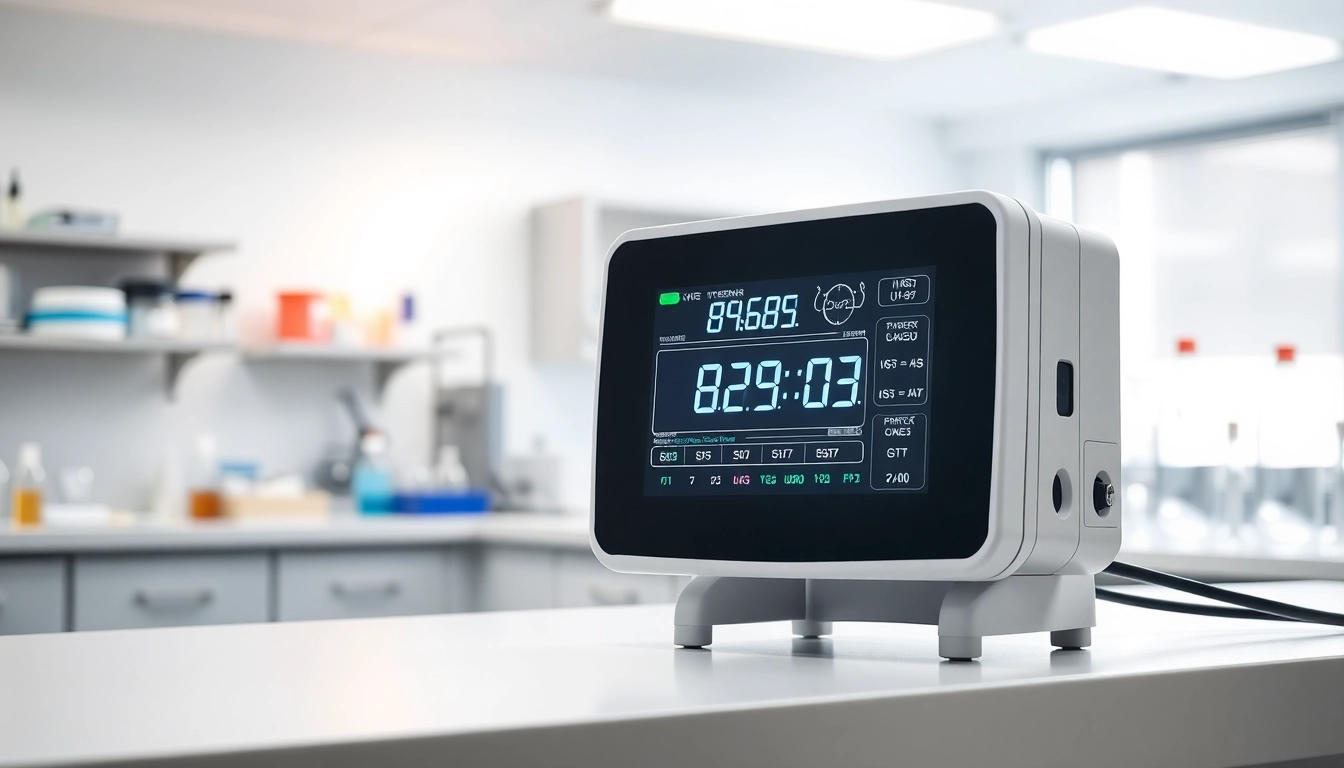1. Introduction to Hydrogen Peroxide Monitoring
Hydrogen peroxide (H2O2) monitoring is an essential aspect in various industries where this powerful oxidizer is used. Given its applications in sanitation, sterilization, and chemical processes, ensuring safe levels of hydrogen peroxide in the environment is critical for employee safety and regulatory compliance. A Hydrogen Peroxide monitor serves as a pivotal tool, enabling industries to detect and measure hydrogen peroxide concentrations accurately.
1.1 What is a Hydrogen Peroxide Monitor?
A hydrogen peroxide monitor is a specialized device designed to detect and measure the concentration of hydrogen peroxide vapors or aerosols in the air. These monitors employ various technologies such as electrochemical sensors, photoionization detectors, or catalytic bead sensors to provide accurate readings. The instruments are capable of not just measuring, but also alerting users when concentrations exceed permissible levels, thereby facilitating timely interventions.
1.2 Importance in Safety Protocols
The presence of hydrogen peroxide in workplaces, particularly in sectors such as healthcare, food processing, and manufacturing, calls for diligent monitoring due to its potential hazards. Hydrogen peroxide can pose health risks such as respiratory irritation, skin burns, and other acute effects at elevated concentrations. Implementing a monitoring system is thus integral to safety protocols, ensuring that exposure limits are maintained, and providing necessary warnings to prevent incidents.
1.3 Overview of Applications
Hydrogen peroxide is widely utilized for its disinfecting and bleaching properties. Its applications include:
- Healthcare: Used for sterilizing instruments and surfaces.
- Food Industry: Applied as a sanitizer for food processing equipment.
- Manufacturing: Employed in chemical manufacturing and as a propellant in Rockets.
Given its varied applications, the need for effective monitoring becomes increasingly apparent to safeguard both human health and product integrity.
2. Key Features of an Effective Hydrogen Peroxide Monitor
2.1 Sensitivity and Accuracy
When selecting a hydrogen peroxide monitor, sensitivity and accuracy are paramount. An effective monitor should be capable of detecting a wide range of hydrogen peroxide concentrations, even at low levels, which is crucial for identifying leaks or accidental releases early. Devices with sensitivity down to parts per billion (ppb) are ideal for industries where even minuscule amounts pose health risks.
2.2 User-Friendly Interface
A user-friendly interface is essential, particularly for environments where non-technical personnel may operate the monitor. Features such as intuitive controls, clear displays, and audible alerts when thresholds are exceeded amplify the effectiveness of monitoring. Digital displays that provide real-time readings along with historical data logs enhance usability, allowing for easy tracking of exposure over time.
2.3 Reliability of Readings
Reliability is another cornerstone of an effective hydrogen peroxide monitor. This encompasses not just the accuracy of readings, but also the consistency over time. Monitors should undergo rigorous testing in various environmental conditions to ensure they provide valid readings, even in fluctuating temperature and humidity conditions that may affect sensor performance. Additionally, having a robust calibration protocol is vital for maintaining the reliability of the monitor’s functionality.
3. Choosing the Right Hydrogen Peroxide Monitor
3.1 Factors to Consider
When choosing a hydrogen peroxide monitor, several factors need to be considered:
- Measurement Range: Understand the typical concentrations of hydrogen peroxide in your environment to choose a monitor that suits your needs.
- Response Time: Look for monitors that provide rapid readings, as delayed responses could lead to safety hazards.
- Portability: If monitoring needs to happen across multiple sites, a portable unit may be more beneficial.
3.2 Comparing Different Models
It’s beneficial to compare various models based on features such as battery life, warranty, and brand reputation. Reading through product comparisons online or consulting peer-reviewed publications can add depth to your understanding of which model may suit your industrial requirements. Assessing similar units can also provide insight into the monitor’s durability and usage frequency, influencing purchasing decisions.
3.3 Customer Reviews and Ratings
Customer reviews and ratings provide real-world testimonies about product performance and reliability. Look for consistency in feedback across multiple platforms for unfiltered insights into issues and advantages experienced by users. Pay attention to comments regarding customer service from the manufacturer, as this can be crucial if you encounter issues after purchase.
4. Best Practices for Utilizing Hydrogen Peroxide Monitors
4.1 Regular Calibration and Maintenance
To ensure your hydrogen peroxide monitor functions correctly, regular calibration is essential. This should be performed according to the manufacturer’s guidelines and industry regulations. Failure to calibrate can lead to inaccurate readings, which could seriously compromise safety. Moreover, routine maintenance checks can prolong the life of the device and uphold its reliability.
4.2 Interpreting the Monitor Readings
Understanding how to interpret the readings from your hydrogen peroxide monitor is crucial. It’s vital to know the acceptable exposure limits for hydrogen peroxide as outlined by local regulatory bodies, such as OSHA or the EPA. Training staff on how to respond to alarms and what actions to take when readings are elevated can significantly enhance safety protocols.
4.3 Safety Precautions for Users
Users should adopt safety precautions while operating hydrogen peroxide monitors. This includes wearing appropriate PPE (Personal Protective Equipment), understanding the operational limits of the monitor, and being aware of signs of hydrogen peroxide exposure. Creating an emergency response plan can further mitigate risks by ensuring everyone knows the necessary procedures in case of a hydrogen peroxide leak.
5. Conclusion and Future Trends in Hydrogen Peroxide Monitoring
5.1 Emerging Technologies
As technology continues to evolve, we can expect to see more advanced hydrogen peroxide monitors on the market. Innovations such as IoT (Internet of Things) integration enable real-time data tracking and remote alerts. Additionally, developments in sensor technology may lead to more compact and sensitive devices that outperform current models in both accuracy and speed.
5.2 Regulatory Landscape Changes
Regulatory frameworks concerning hazardous substances are constantly evolving. As awareness of the dangers associated with hydrogen peroxide increases, regulatory bodies might impose stricter monitoring requirements. Staying informed about these changes will be crucial for organizations to maintain compliance and to safeguard the health of their personnel.
5.3 Final Thoughts on Safety Enhancements
In concluding, the importance of implementing a hydrogen peroxide monitor cannot be overstated. Not only does it protect the health of employees, but it also fosters a safe working environment. With technological advancements and a proactive approach towards safety, organizations can significantly mitigate risks associated with hydrogen peroxide exposure, ultimately leading to improved operational efficiency and compliance with health standards.



